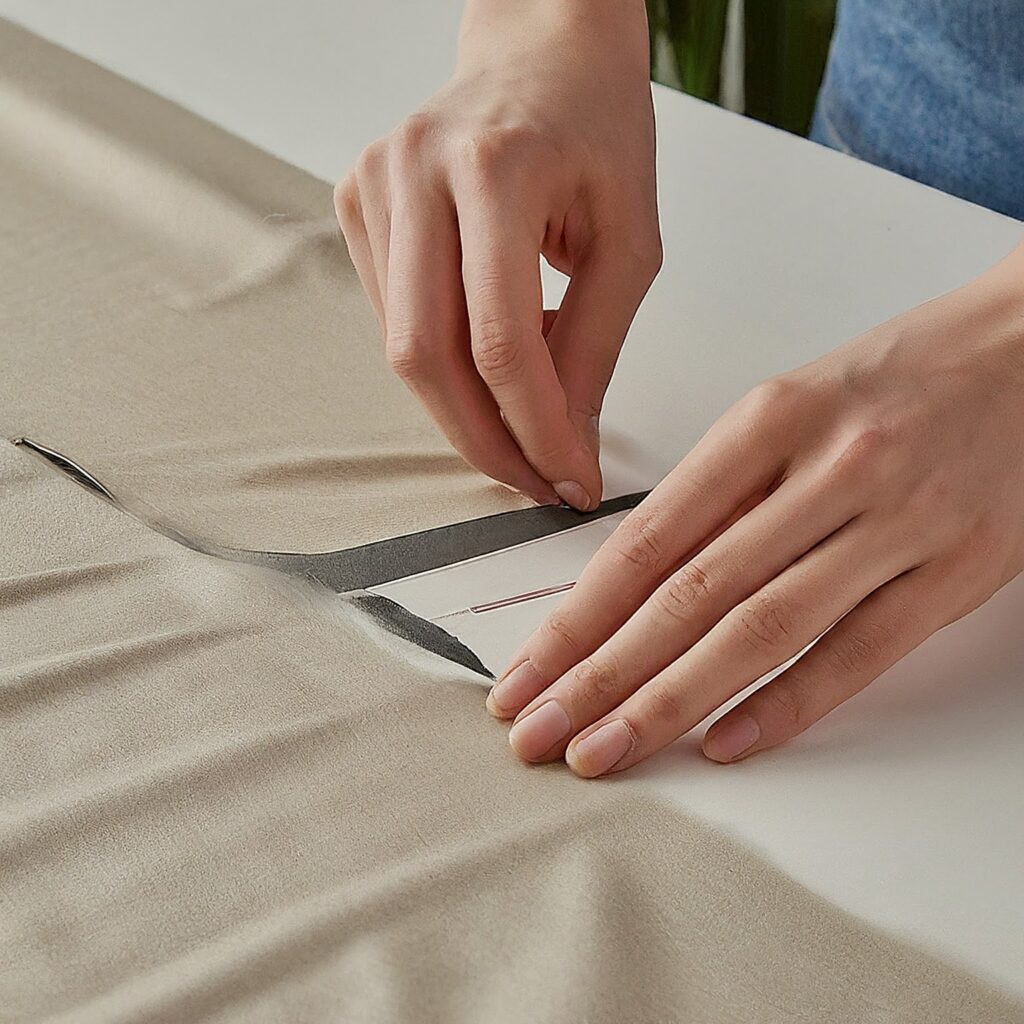The Role of Woven Interlining in High-Quality Tailoring | Key Benefits & Types
Tailoring is an art, and to master it, understanding every component that contributes to a well-crafted garment is crucial. One such essential component is woven interlining. If you’re passionate about high-quality tailoring or simply interested in the intricacies of garment construction, then knowing about woven interlining can elevate your knowledge and skills. Let’s dive into why woven interlining is so important in achieving top-notch tailoring.
Table of Contents
- What is Woven Interlining?
- Why Woven Interlining is Essential in Tailoring
- Types of Woven Interlining
- How Woven Interlining Enhances Tailoring
- Choosing the Right Woven Interlining
- Benefits of Using Woven Interlining in Tailoring
- Tips for Using Woven Interlining Effectively
- Conclusion

What is Woven Interlining?
Woven interlining is a type of fabric used in tailoring to provide structure and support to garments. Unlike fusible interlining, which bonds to the outer fabric with heat, woven interlining is sewn or fused into place, making it a versatile choice for high-end tailoring.
Why Woven Interlining is Essential in Tailoring
Woven interlining offers numerous benefits to tailored garments:
- Provides Structure and Shape: It gives garments a defined shape and prevents them from sagging or losing their form over time.
- Ensures Durability and Longevity: By reinforcing the fabric, woven interlining helps garments withstand wear and tear, extending their lifespan.
- Improves Comfort and Drapability: Woven interlining can enhance the comfort and drape of a garment, making it feel luxurious and enjoyable to wear.
- Enhances Insulation and Temperature Regulation: Depending on the type of woven interlining used, it can provide insulation or breathability, helping to regulate body temperature.

Types of Woven Interlining
There are several types of woven interlining, each with its own unique properties:
- Canvas Interlining: Known for its durability and structure, canvas is often used in heavier garments like coats and blazers.
- Crisp Interlining: Provides a stiff, crisp feel ideal for formal jackets and blazers that need a structured look.
- Soft Interlining: Adds a softer, more flexible support, suitable for lightweight garments and dresses.
- Lightweight Interlining: Perfect for delicate fabrics where you need minimal additional weight.
- Fusible Interlining: While not technically woven, fusible interlining is often used in tailoring for its convenience. It’s bonded to the outer fabric using heat.
- Non-Fusible Interlining: This is the traditional type of interlining, sewn into place for added durability and control.
Understanding these types will help you choose the right woven interlining for your specific tailoring needs, ensuring the best results for your garments.

How Woven Interlining Enhances Tailoring
Woven interlining does more than just add support; it transforms the quality of your tailoring. Here’s how:
- Defines Shape: Woven interlining helps garments maintain their intended shape, whether it’s the structured shoulders of a blazer or the clean lines of a coat.
- Smooths Out Wrinkles: It reduces the appearance of wrinkles, keeping your garments looking sharp throughout the day.
- Improves Draping: High-quality interlining enhances the way fabric falls and drapes, giving garments a more polished and elegant appearance.
When you incorporate woven interlining into your tailoring process, you’re not just improving the garment’s structure but also enhancing its overall aesthetic appeal.

Choosing the Right Woven Interlining
Selecting the appropriate woven interlining is crucial for achieving the desired results in your tailoring projects. Consider the following factors:
- Fabric Type: The weight, drape, and composition of the outer fabric will influence your choice of interlining.
- Garment Style: Different garment styles may require different types of interlining to achieve the desired shape and structure.
- Desired Weight and Body: The thickness and stiffness of the interlining will affect the overall weight and body of the garment.
- Environmental Factors: If the garment will be exposed to extreme temperatures or humidity, choose an interlining that can withstand those conditions.

Benefits of Using Woven Interlining in Tailoring
Using woven interlining in your tailoring projects offers several advantages:
- Superior Fit and Finish: Woven interlining helps to achieve a more precise and tailored fit, resulting in a garment that looks and feels exceptional.
- Enhanced Garment Performance: By providing structure, durability, and comfort, woven interlining improves the overall performance of a garment.
- Increased Customer Satisfaction: Tailored garments made with high-quality woven interlining are more likely to satisfy customers and exceed their expectations.

Tips for Using Woven Interlining Effectively
To get the most out of woven interlining in your tailoring projects, keep these tips in mind:
- Quality Matters: Invest in high-quality woven interlining to ensure the best results.
- Proper Application Techniques: Follow the manufacturer’s instructions for proper application and sewing techniques.
- Consider Environmental Factors: Choose an interlining that is suitable for the climate and conditions in which the garment will be worn.
- Experiment and Find What Works Best: Don’t be afraid to experiment with different types of woven interlining to find what works best for your specific tailoring needs.
Conclusion
Woven interlining is a fundamental component in high-quality tailoring, providing structure, durability, and enhanced fit to your garments. By understanding its types, benefits, and proper application, you can elevate your tailoring skills and produce garments that are not only stylish but also built to last.
So, next time you’re working on a tailoring project, remember the critical role that woven interlining plays in achieving that perfect, polished look. Whether you’re crafting a bespoke suit or a stylish dress, integrating the right woven interlining can make all the difference
Link of related Articles
- The Future of Non-Woven Interlining: Innovations, Trends, and Applications
- Non-Woven Fabric Manufacturing Process: A Detailed Guide
- What is Non-Woven Interlining Used For? | Benefits & Applications

